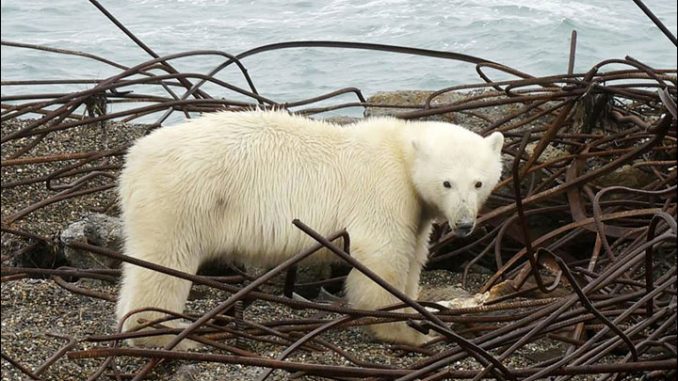
‘Now the walruses are gone, but about 20 polar bears remain practically next to the village.’ Picture: Tatyana Minenko
Around 20 beasts have surrounded Ryrkaypiy, with one bear cub trying to get into a house through the window.
The polar bears were attracted by 5,000 walruses that appeared this year at a special protection zone in Chukotka.
Many of the frightened flippered marine mammals fell off cliffs at Kozhevnikova Cape as they sought to flee the invaders.
Several hundred fell to their deaths, and the polar bears then ate the carcasses.
Head of WWF project Polar Bear Patrol, Viktor Nikiforov, said: ‘This autumn the situation is alarming.
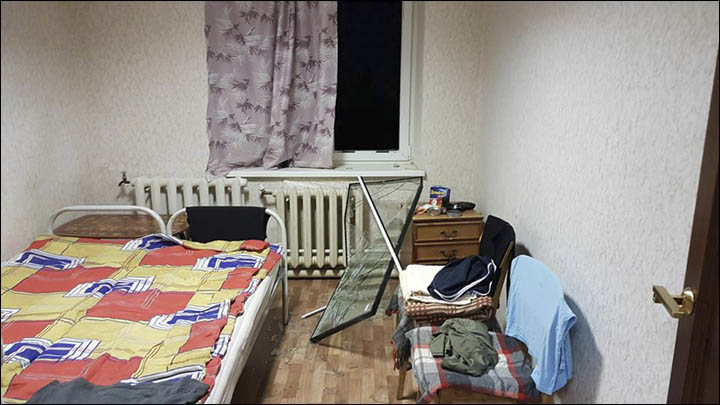
‘Three days ago, a bear squeezed in a window and tried to get inside.’ Picture: Tatyana Minenko
‘Many crashed, falling from a height.
‘Their rookery had attracted polar bears.
‘The walruses were obviously frightened by the predators, panicked and fell from the top to their deaths.’
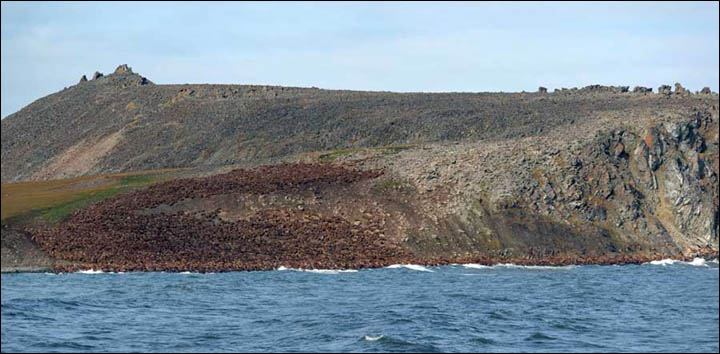
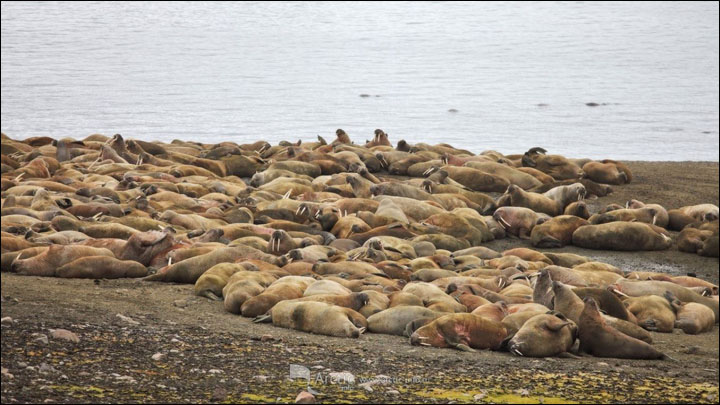
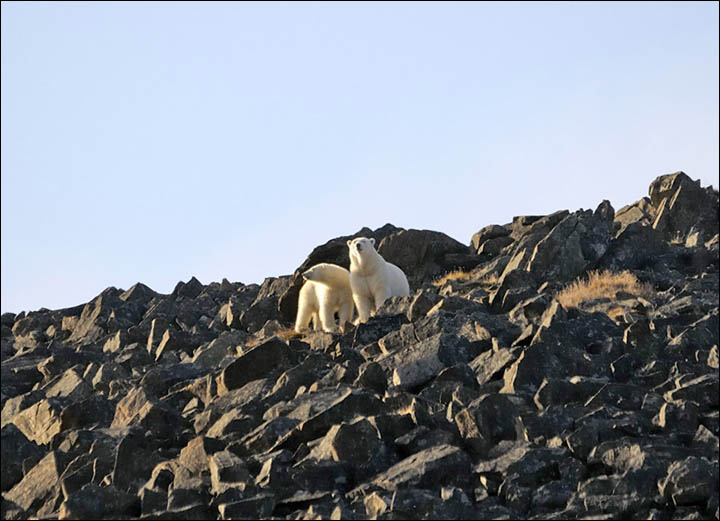
Walruses and polar bears on Cape Kozhevnikov. Pictures: Maxim Deminov/WWF
‘Up to 5,000 walruses were on the rookery, but there were a lot of dead animals – several hundred…
Now the walruses have migrated away but the village remains surrounded.
‘Now the walruses are gone, but about 20 polar bears remain practically next to the village,’ he said.
‘There is enough food for them (from the many fallen walruses), but several young bears approach to the houses out of curiosity.
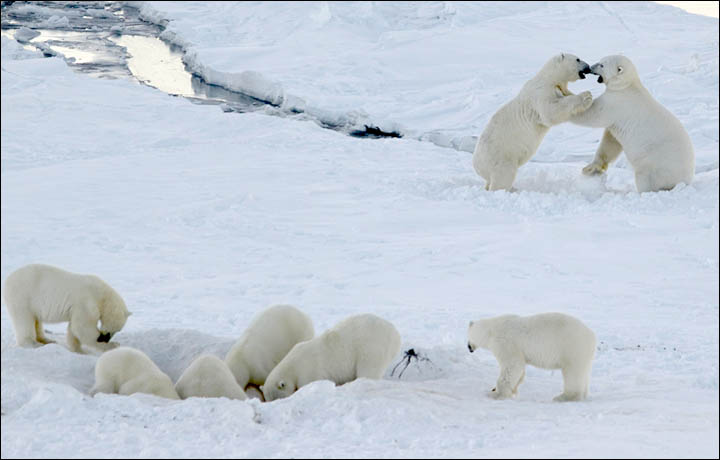
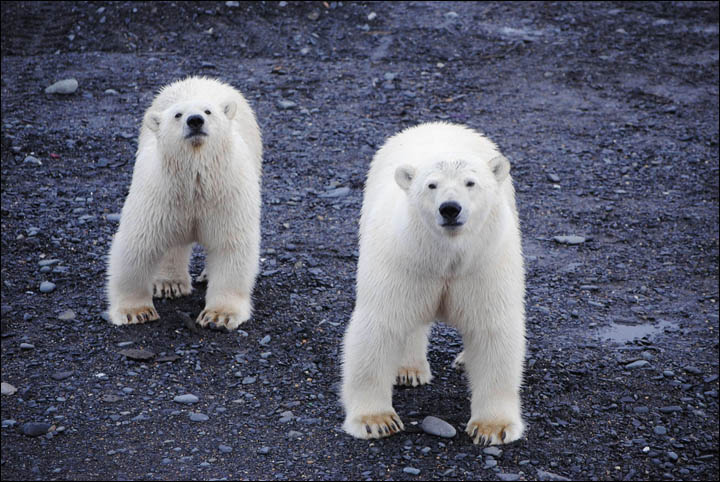
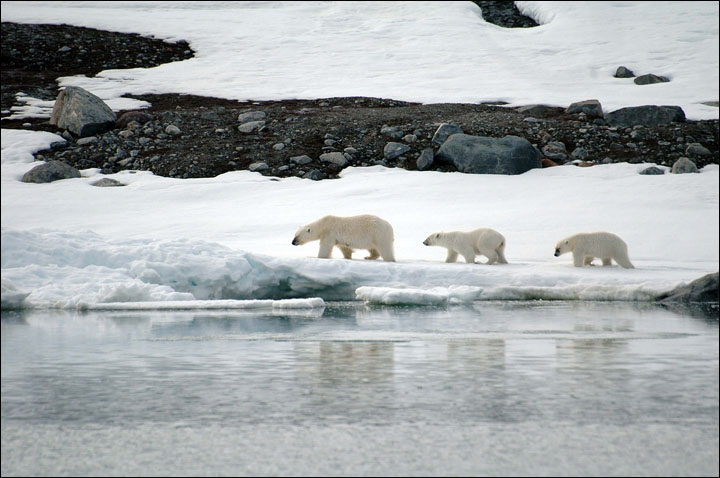
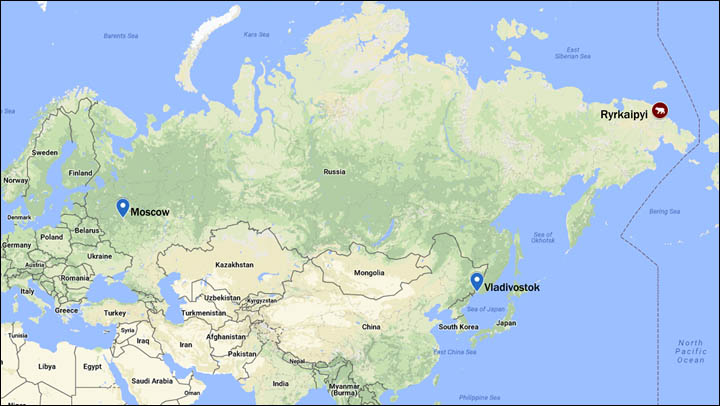
Polar bears around Ryrkaipyi village. Pictures: Maxim Deminov, Varvara Sememova/WWF, The Siberian Times
‘Three days ago, a bear squeezed in a window and tried to get inside.
‘It’s clear that people are frightened.’
Locals are patrolling and scaring the polar bears away from homes when they approach, he said.
‘We are trying to save the lives of both people and Red Book polar bears …’
Ref.: http://siberiantimes.com/ecology/others/news/village-besieged-by-polar-bears-as-hundreds-of-terrorised-walruses-fall-38-metres-to-their-deaths/
And, of course, again the (Man Made) Climate Change (Scam) has to be part of the story
New polar bear star of Moscow Zoo is symbol of a dire problem for species caused by climate change
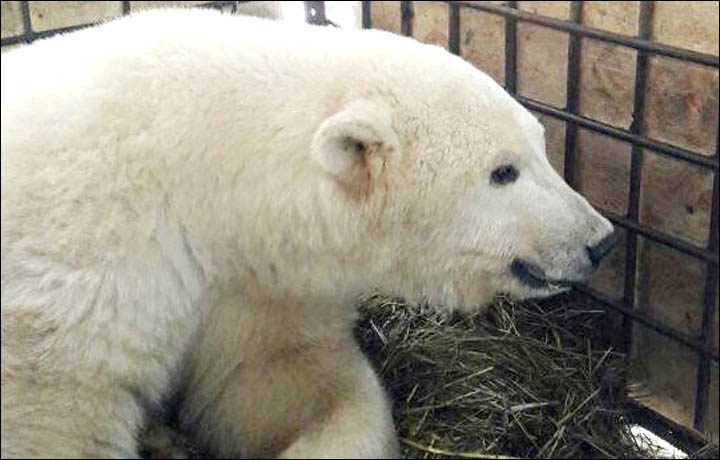
This polar bear cub is currently in qiuarentine before hitting the big lights by becoming a new star at Moscow Zoo. Picture: Ministry of Nature Protection of Yakutia
This animal and its lost mother wandered some 700 km too far south ‘because they couldn’t go north’ and got confused
This bear hit the headlines a few weeks ago after being spotted so far from the Arctic coastline – but its extraordinary achievement in finding its way so far south, deep into dangerous brown bear territory, is now attracting expert attention.
The young beast, only ten months old, was found near a fishing plant on the Kolyma River, where locals fed the cub throwaway fish.
The off-course animal, hundreds of miles from its natural habitat, was successfully captured, and the plan was to release it into its favoured cold territory on an Arctic island.
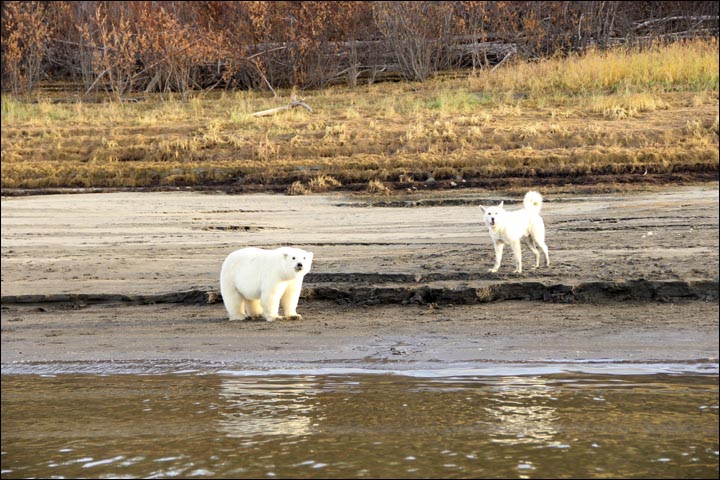
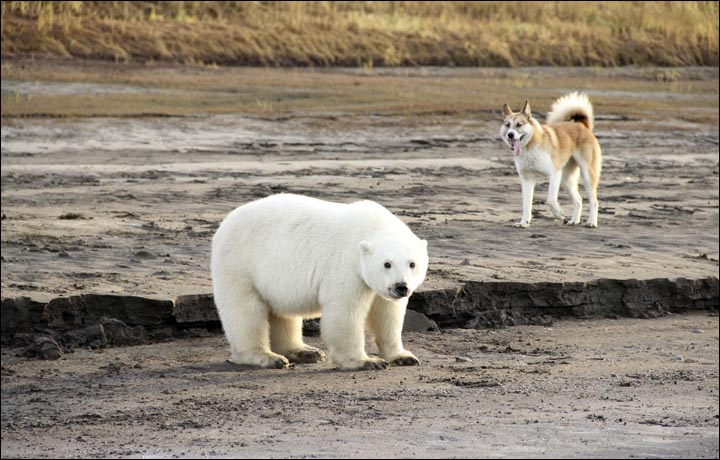
She had taken up residence near a fishing plant on the Kolyma River, where locals fed her on throwaway fish. Pictures: Ministry of Nature Protection of Yakutia
But specialists judged it had had too much human contact, and also not enough maternal coaching in survival in the wild.
At first it was to be taken to the zoo in Yakutsk but now its magical mystery tour is going further, and this polar bear cub is currently in qiuarentine before hitting the big lights by becoming a new star at Moscow Zoo.
The pictures show the bear in transit after being tranquillised on the Kolyma River.
The Defence Ministry flew the bear to the Russian capital, but the flight was not easy: a huge snowfall hit Omsk after the Il-46 military plane landed for refuelling.
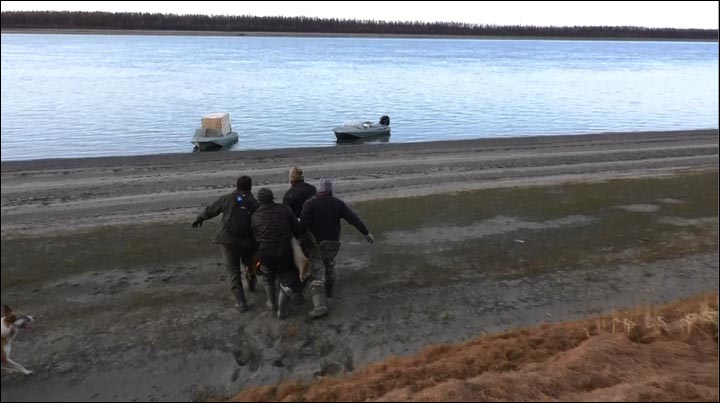
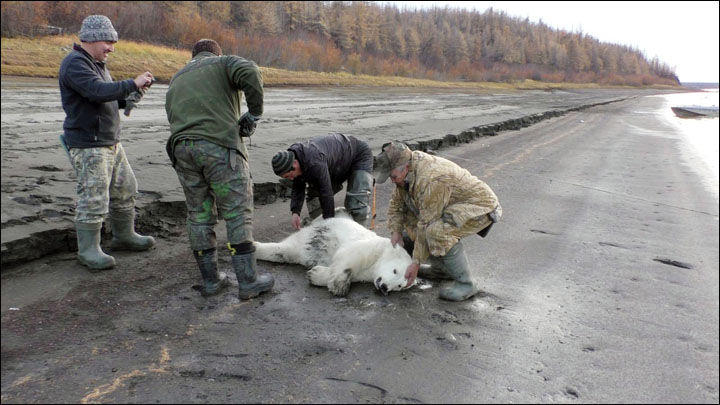
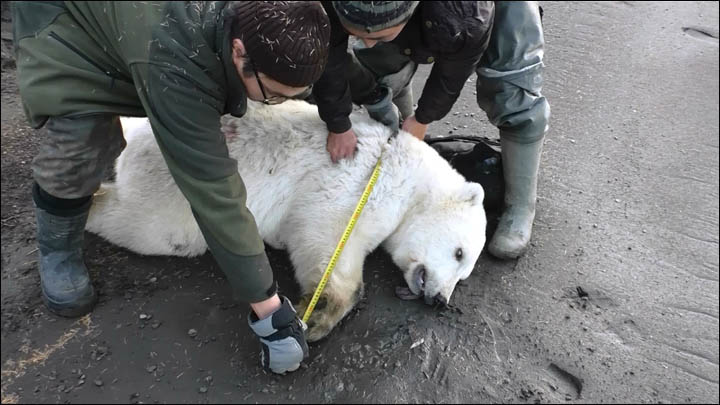
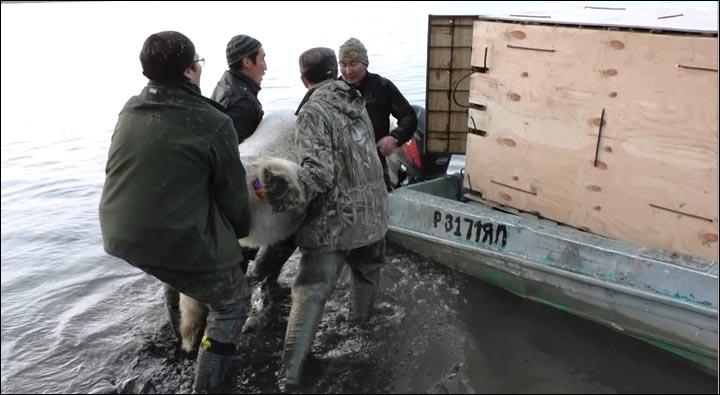

The off-course animal, hundreds of miles from its natural habitat, was successfully captured. Pictures: Ministry of Nature Protection of Yakutia
The cub is well, and eats and swims happily on the latest leg of its odyssey.
Two key questions remain. How did the young cub – and presumably its mother – manage to walk so far south? And why?
Yakutia regional wildlife expert Fedor Yakovlev says northern regions are seeing an increase in cases when bears approach reindeer herders and remote fishermen.
True, no bear has gotten so far south before in Srednekolymsky district.
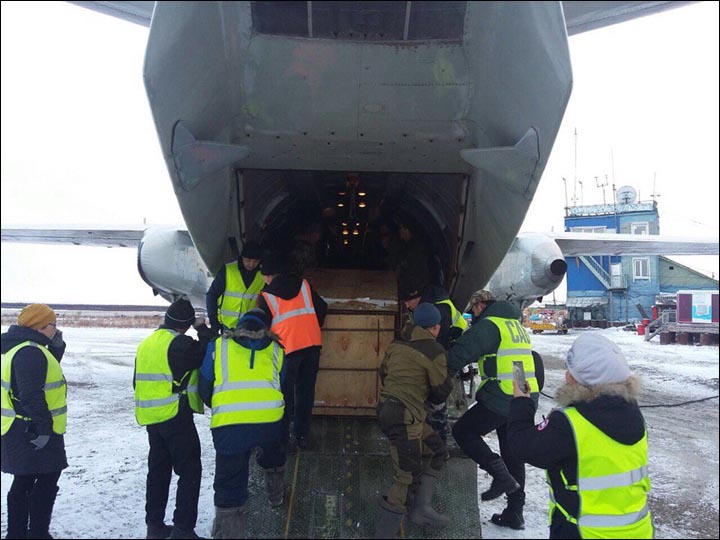
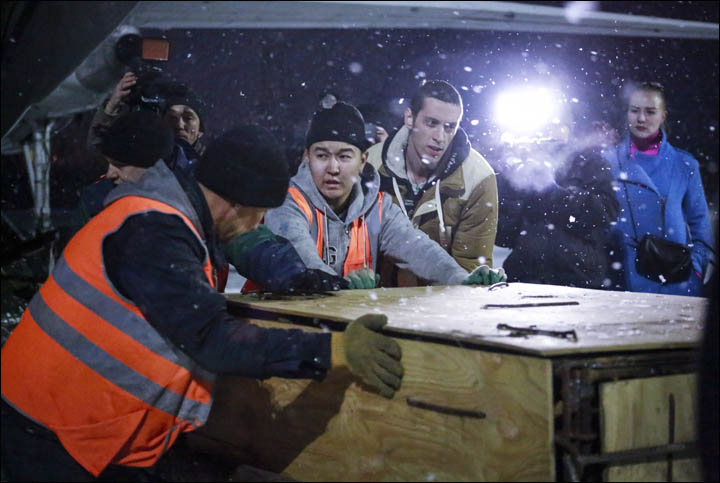
The Defence Ministry flew the bear to the Russian capital, but the flight was not easy: a huge snowfall hit Omsk after the Il-46 military plane landed for refuelling. Pictures: Ministry of Nature Protection of Yakutia
‘Recently in the month of August on the coast in the lower reaches of the Kolyma River, polar bears are beginning to appear,’ he said.
They were unknown here until around 2005.
‘The thawing of Arctic ice as a result of global warming has led to an expansion of the polar bear migration area, and now they are reaching out to human settlements more often,’ he explained.
‘Because of the rapid thawing of ice, some bears die at the ice holes as they swim, others – go to people.’
To prevent accidents, in 2006 a project of the World Wildlife Fund ‘Bear Patrol’ was launched in Chukotka.
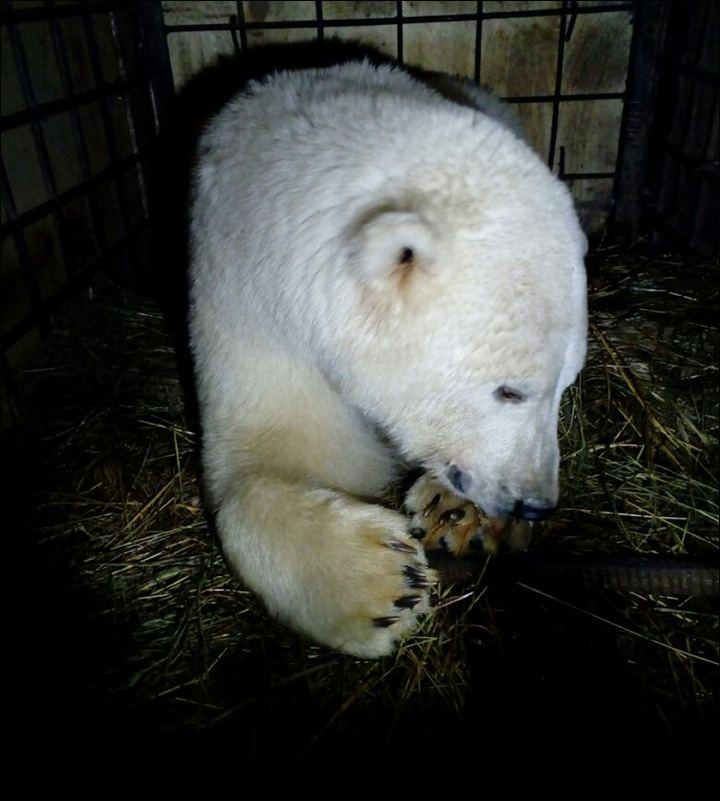
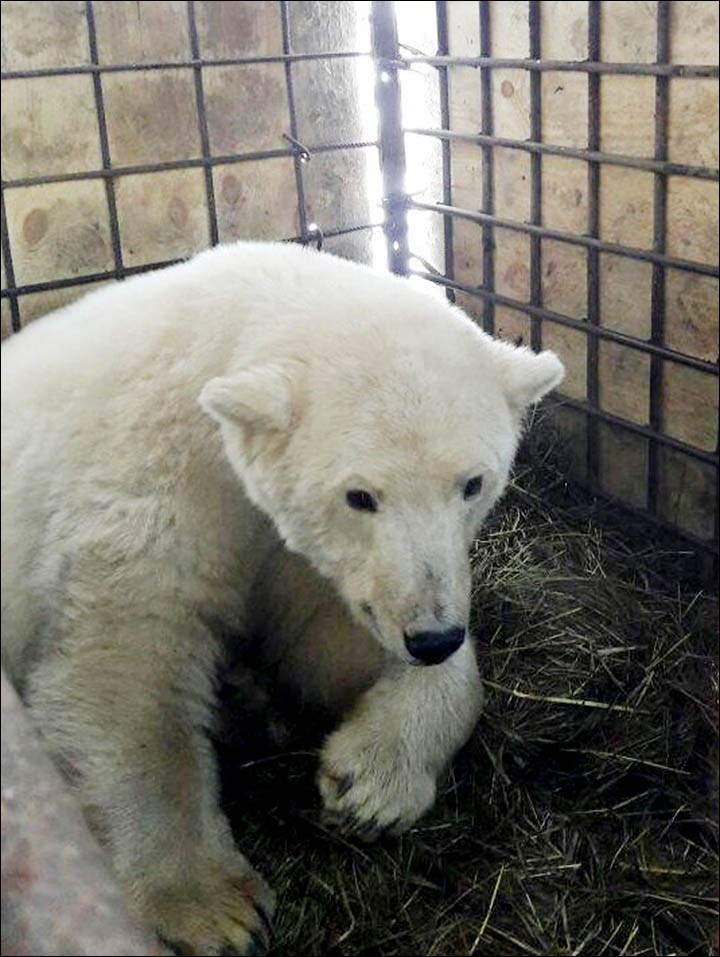
The pictures show the bear in transit after being tranquillised on the Kolyma River. Pictures: Ministry of Nature Protection of Yakutia
Currently, such patrols, consisting mainly of local residents, operate in many arctic settlements.
Their main task is to drive uninvited guests away with rubber bullets, and also monitor the number and condition of polar bears.
So he believes this cub presumably with its mother that became exhausted from the trek went further south in looking for food than other bears.
But the reason was the same. There was no ice in the Arctic seas on which they would normally roam.
And they did it to extremes.
Some have suggested the cub might have been poached and brought by humans so far south.
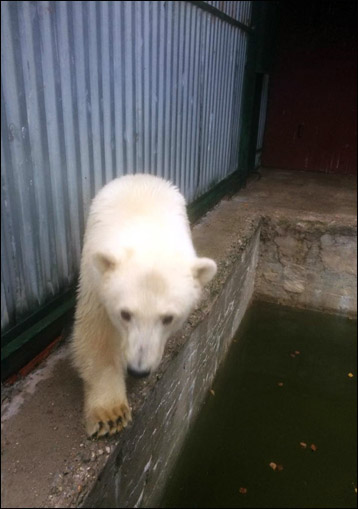 |
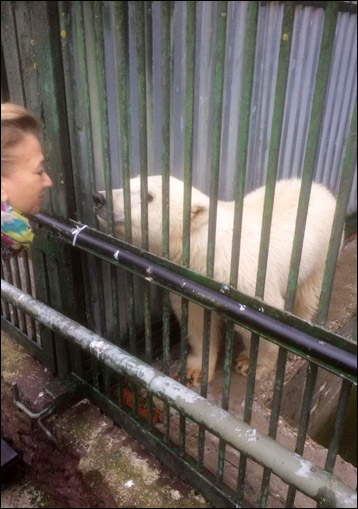 |
The cub is well, and eats and swims happily on the latest leg of its odyssey. Pictures: Ministry of Nature Protection of Yakutia
‘I rule out a version of poaching in relation to the bear’s mother,’ said Yakovlev.
‘The bear was quite well-fed, indicating that she had lost her mother relatively recently.
‘My version is this: the mother of the cub was weakened, perhaps old, or too young.
‘She gave all her energy and strength to her baby.
‘Perhaps it was attacked by a brown bear, and the bear cub managed to escape.’
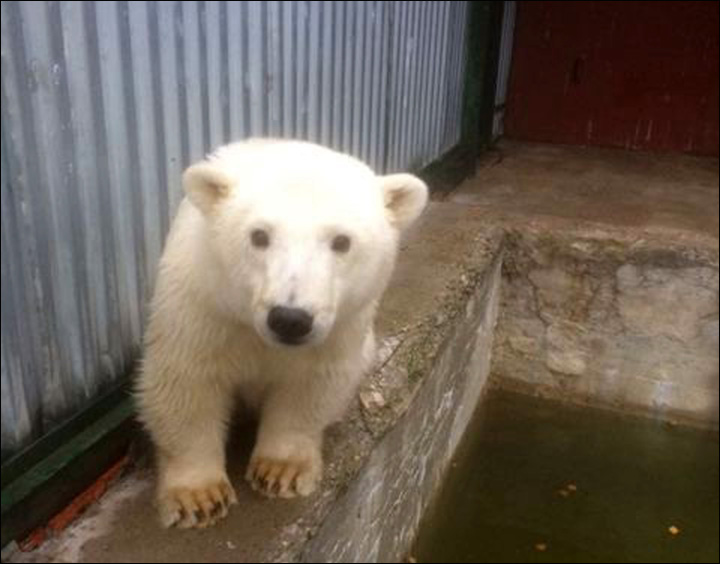
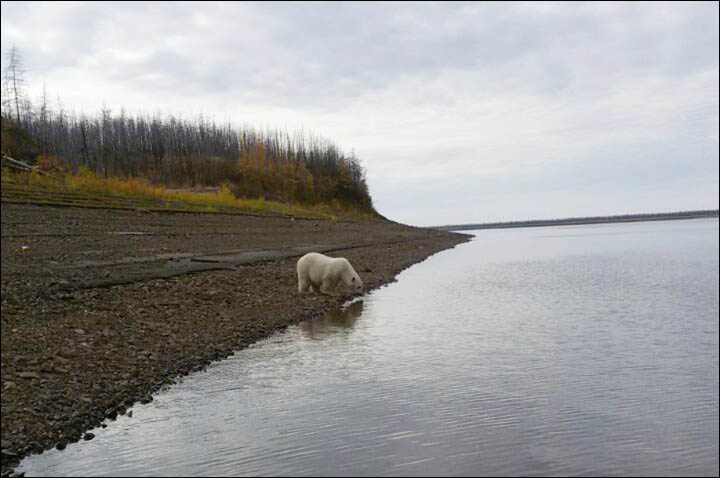
‘Perhaps it was attacked by a brown bear, and the bear cub managed to escape.’ Pictures: Ministry of Nature Protection of Yakutia
If if is right, there will be more transgressions by polar bears into territory held by brown bears.
The losers from this will be polar bears, say experts.
Although, in North America cases have been reported of mating between polar bears and grizzlies.
They are known as a ‘pizzly’ or ‘grolar’.
This region of Russia is where woolly mammoths are likely to reappear if they can be brought back from the dead.
But it may not be the only surprise species in Yakutia.
Meanwhile, if you’re travelling to Moscow you’ll soon be able to see and admire this remarkable Siberian polar bear.
Ref.: http://siberiantimes.com/ecology/others/news/new-polar-bear-star-of-moscow-zoo-is-symbol-of-a-dire-problem-for-species-caused-by-climate-change/
Clearly The Siberian Times isn’t honest, there’s no (Man Made) Global Warming, or Man Made Climate Change, in fact there has never been recorded this many polar bears as today ..
But hey, don’t let facts stand in the way for a good lie
Death of a Climate Icon – the polar bear’s demise as a useful poster child
Last week I asked: “What’s causing the death of the polar bear as a climate change icon?”
I was echoing the conclusion of a commentator at the Arctic Institute (22 August 2017) who lamented: “The polar bear is dead, long live the polar bear” and climate scientist Michael Mann, who told a lecture audience a few months ago that polar bears are no longer useful for generating “action” on climate change.
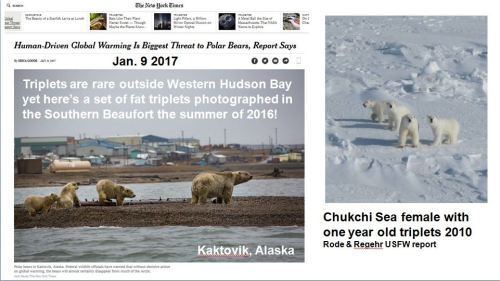
This is slide 15 from my presentation at ICCC-12 in Washington, D.C. in March 2017.
Now here’s the video. Watch “The Death of a Climate Icon” (31 August 2017):
The video was made possible with the assistance of the Global Warming Policy Foundation.
Kind of makes you wonder: is Al Gore’s recent climate change movie, An Inconvenient Sequel: Truth to Power, tanking at the box officebecause he couldn’t include polar bears as an example of the effects of human-caused global warming as he did in his award-winning 2007 effort? Did too many polar bears doom Gore’s 2017 movie?
Conclusions in the video about the predictions of polar bear decline vs. the current status of polar bears and sea ice are documented in my 2017 published paper:
Crockford, S.J. 2017. Testing the hypothesis that routine sea ice coverage of 3-5 mkm2 results in a greater than 30% decline in population size of polar bears (Ursus maritimus). PeerJ Preprints 19 January 2017. Doi: 10.7287/peerj.preprints.2737v1 Open access. https://peerj.com/preprints/2737/


